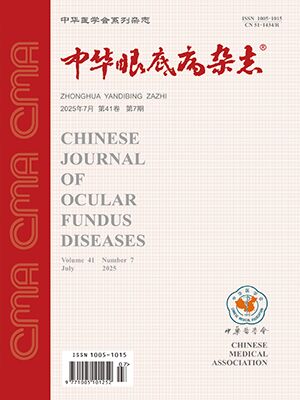| 1. |
Kalin-Hajdu E, Hirabayashi KE, Vagefi MR, et al. Invasive fungal sinusitis: treatment of the orbit[J]. Curr Opin Ophthalmol, 2017, 28(5): 522-533. DOI: 10.1097/ICU.0000000000000394.
|
| 2. |
Thery A, Espitalier F, Cassagnau E, et al. Clinical features and outcome of sphenoid sinus aspergillosis: a retrospective series of 15 cases[J]. Eur Ann Otorhinolaryngol Head Neck Dis, 2012, 129(4): 179-184. DOI: 10.1016/j.anorl.2011.06.005.
|
| 3. |
Chen L, Jiang L, Yang B, et al. Clinical features of visual disturbances secondary to isolated sphenoid sinus inflammatory diseases[J]. BMC Ophthalmol, 2017, 17(1): 237. DOI: 10.1186/s12886-017-0634-9.
|
| 4. |
Jung JH, Cho GS, Chung YS, et al. Clinical characteristics and outcome in patients with isolated sphenoid sinus aspergilloma[J]. Auris Nasus Larynx, 2013, 40(2): 189-193. DOI: 10.1016/j.anl.2012.07.008.
|
| 5. |
中国医师协会血液科医师分会, 中国侵袭性真菌感染工作组. 血液病/恶性肿瘤患者侵袭性真菌病的诊断标准与治疗原则(第六次修订版)[J]. 中华内科杂志, 2020, 59(10): 754-763. DOI: 10.3760/cma.j.cn112138-20200627-00624.Chinese Association Hematologists, Chinese Invasive Fungal Infection Working Group. The Chinese guidelines for the diagnosis and treatment of invasive fungal disease in patients with hematological disorders and cancers (the 6th revision)[J]. Chin J Intern Med, 2020, 59(10): 754-763. DOI: 10.3760/cma.j.cn112138-20200627-00624.
|
| 6. |
Chakrabarti A, Denning DW, Ferguson BJ, et al. Fungal rhinosinusitis: a categorization and definitional schema addressing current controversies[J]. Laryngoscope, 2009, 119(9): 1809-1818. DOI: 10.1002/lary.20520.
|
| 7. |
中华医学会眼科学会眼底病学组. 我国糖尿病视网膜病变临床诊疗指南(2014年)[J]. 中华眼科杂志, 2014, 50(11): 851-865. DOI: 10.3760/cmaj.issn.04124081.2014.11.014.Fundus Disease Group of Chinese Medical Association Ophthalmology Branch. Guideline for clinical diagnosis and treatment of diabetic retinopathy in China (2014)[J]. Chin J Ophthalmol, 2014, 50(11): 851-865. DOI: 10.3760/cmaj.issn.04124081.2014.11.014.
|
| 8. |
Ho VY, Yeh S, Olsen TW, et al. Short-term outcomes of aflibercept for neovascular age-related macular degeneration in eyes previously treated with other vascular endothelial growth factor inhibitors[J]. Am J Ophthalmol, 2013, 156(1): 23-28. DOI: 10.1016/j.ajo.2013.02.009.
|
| 9. |
郭思彤, 李众, 姜利斌, 等. 静脉注射甲泼尼龙冲击治疗复发性AQP4抗体阳性视神经脊髓炎相关视神经炎的效果分析[J]. 中华眼科杂志, 2020, 56(7): 509-513. DOI: 10.3760/cma.j.cn112142-20190629-00353.Guo ST, Li Z, Jiang LB, et al. Effects of intravenous methylprednisolone pulse therapy on recurrent optic neuritis associated with aquaporin 4 antibody seropositive neuromyelitis optica[J]. Chin J Ophthalmol, 2020, 56(7): 509-513. DOI: 10.3760/cma.j.cn112142-20190629-00353.
|
| 10. |
Melgarejo JD, Lee JH, Petitto M, et al. Glaucomatous optic neuropathy associated with nocturnal dip in blood pressure: findings from the maracaibo aging study[J]. Ophthalmology, 2018, 125(6): 807-814. DOI: 10.1016/j.ophtha.2017.11.029.
|
| 11. |
Raz E, Win W, Hagiwara M, et al. Fungal sinusitis[J]. Neuroimaging Clin N Am, 2015, 25(4): 569-576. DOI: 10.1016/j.nic.2015.07.004.
|
| 12. |
Kim JS, Kim BK, Hong SD, et al. Clinical characteristics of sphenoid sinus fungal ball patients with visual disturbance[J]. Clin Exp Otorhinolaryngol, 2016, 9(4): 326-331. DOI: 10.21053/ceo.2015.01571.
|
| 13. |
Promsopa C, Polwiang P, Chinpairoj S, et al. Complications of isolated fungal sphenoiditis: patient clinical characteristics[J]. ORL J Otorhinolaryngol Relat Spec, 2020, 82(1): 15-24. DOI: 10.1159/000503902.
|
| 14. |
Chang YS, Chen PL, Hung JH, et al. Orbital complications of paranasal sinusitis in Taiwan, 1988 through 2015: acute ophthalmological manifestations, diagnosis, and management[J/OL]. PLoS One, 2017, 12(10): e0184477[2017-10-03]. https://pubmed.ncbi.nlm.nih.gov/28972988/. DOI: 10.1371/journal.pone.0184477.
|
| 15. |
D'Anza B, Stokken J, Greene JS, et al. Chronic invasive fungal sinusitis: characterization and shift in management of a rare disease[J]. Int Forum Allergy Rhinol, 2016, 6(12): 1294-1300. DOI: 10.1002/alr.21828.
|
| 16. |
Illing EA, Dunlap Q, Woodworth BA. Outcomes of pressure-induced cranial neuropathies from allergic fungal rhinosinusitis[J]. Otolaryngol Head Neck Surg, 2015, 152(3): 541-545. DOI: 10.1177/0194599814567302.
|
| 17. |
Chen JC, Ho CY. The significance of computed tomographic findings in the diagnosis of fungus ball in the paranasal sinuses[J]. Am J Rhinol Allergy, 2012, 26(2): 117-119. DOI: 10.2500/ajra.2012.26.3707.
|
| 18. |
杨本涛, 王振常, 曹明阁, 等. 鼻窦真菌球CT和MRI诊断[J]. 中国医学影像技术, 2004, 20(2): 172-174. DOI: 10.3321/j.issn:1003-3289.2004.02.006.Yang BT, Wang ZC, Cao MG, et al. CT and MRI diagnosis of fungus ball in the paranasal sinus[J]. Chin J Med Imaging Technol, 2004, 20(2): 172-174. DOI: 10.3321/j.issn:1003-3289.2004.02.006.
|
| 19. |
杨本涛, 王振常, 刘莎, 等. 慢性侵袭性真菌性鼻窦炎的CT和MRI诊断[J]. 中华放射学杂志, 2005, 39(8): 826-830. DOI: 10.3760/j.issn:1005-1201.2005.08.009.Yang BT, Wang ZC Liu S, et al. CT and MRI diagnosis of chronic invasive fungal sinusitis[J]. Chin J Radiol, 2005, 39(8): 826-830. DOI: 10.3760/j.issn:1005-1201.2005.08.009.
|
| 20. |
Groppo ER, El-Sayed IH, Aiken AH, et al. Computed tomography and magnetic resonance imaging characteristics of acute invasive fungal sinusitis[J]. Arch Otolaryngol Head Neck Surg, 2011, 137(10): 1005-1010. DOI: 10.1001/archoto.2011.170.
|
| 21. |
Fatterpekar G, Mukherji S, Arbealez A, et al. Fungal diseases of the paranasal sinuses[J]. Semin Ultrasound CT MR, 1999, 20(6): 391-401. DOI: 10.1016/s0887-2171(99)90023-9.
|
| 22. |
Silverman CS, Mancuso AA. Periantral soft-tissue infiltration and its relevance to the early detection of invasive fungal sinusitis: CT and MR findings[J]. AJNR Am J Neuroradiol, 1998, 19(2): 321-325.
|
| 23. |
Zinreich SJ, Kennedy DW, Malat J, et al. Fungal sinusitis: diagnosis with CT and MR imaging[J]. Radiology, 1988, 169(2): 439-444. DOI: 10.1148/radiology.169.2.3174990.
|
| 24. |
Choi YR, Kim JH, Min HS, et al. Acute invasive fungal rhinosinusitis: MR imaging features and their impact on prognosis[J]. Neuroradiology, 2018, 60(7): 715-723. DOI: 10.1007/s00234-018-2034-0.
|




